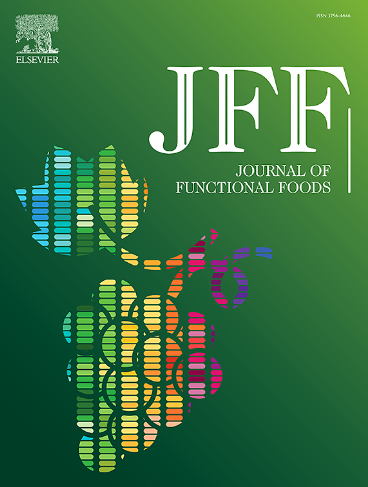藜麦通过上调胰岛素信号和调节肠道微生物群组成来缓解db/db小鼠的糖尿病症状
IF 3.8
2区 农林科学
Q2 FOOD SCIENCE & TECHNOLOGY
引用次数: 0
摘要
藜麦是膳食干预或缓解 2 型糖尿病的理想食物,但其对糖尿病的影响及其潜在机制仍不清楚。本研究利用 db/db 小鼠测试了不同藜麦比例的饮食方案对 T2DM 症状、胰岛素信号通路和肠道菌群的影响。结果显示,藜麦饮食干预后,db/db小鼠的T2DM症状得到改善,包括空腹血糖降低、体重减轻、糖耐量增强、胰岛素抵抗(IR)降低、血脂异常改善以及非酒精性脂肪肝(NAFLD)程度减轻。有趣的是,我们还证明,藜麦饮食还能激活胰岛素信号传导,改善肠道菌群多样性。上述结果表明,藜麦饮食可通过激活 PI3K/AKT 信号通路和改变肠道微生物菌群多样性来改善 db/db 小鼠的 T2DM 症状,藜麦有望成为治疗 T2DM 的功能性食品配料和治疗剂。本文章由计算机程序翻译,如有差异,请以英文原文为准。

Quinoa alleviates the diabetic symptoms of db/db mice by upregulating insulin signaling and modulating gut microbiota composition
Quinoa is ideal for dietary intervention or alleviation of type 2 diabetes mellitus, but its effects on diabetes and underlying mechanisms remain unclear. In this study, the effects of dietary regimens with different quinoa ratios on T2DM symptoms, insulin signaling pathways and gut flora were tested by using db/db mice. The results showed that T2DM symptoms in db/db mice were improved after quinoa dietary intervention, including lower fasting blood glucose, weight loss, enhanced glucose tolerance, lower insulin resistance(IR), improved dyslipidemia, and reduced degree of non-alcoholic fatty liver disease (NAFLD). Interestingly, we also demonstrated that the quinoa diet also activated insulin signaling and improved gut flora diversity. The above results demonstrate that quinoa diet can improve T2DM symptoms in db/db mice by activating the PI3K/AKT signaling pathway and altering gut microflora diversity, and that quinoa has potential to be a functional food ingredient and therapeutic agent for the treatment of T2DM.
求助全文
通过发布文献求助,成功后即可免费获取论文全文。
去求助
来源期刊

Journal of Functional Foods
FOOD SCIENCE & TECHNOLOGY-
CiteScore
9.60
自引率
1.80%
发文量
428
审稿时长
76 days
期刊介绍:
Journal of Functional Foods continues with the same aims and scope, editorial team, submission system and rigorous peer review. We give authors the possibility to publish their top-quality papers in a well-established leading journal in the food and nutrition fields. The Journal will keep its rigorous criteria to screen high impact research addressing relevant scientific topics and performed by sound methodologies.
The Journal of Functional Foods aims to bring together the results of fundamental and applied research into healthy foods and biologically active food ingredients.
The Journal is centered in the specific area at the boundaries among food technology, nutrition and health welcoming papers having a good interdisciplinary approach. The Journal will cover the fields of plant bioactives; dietary fibre, probiotics; functional lipids; bioactive peptides; vitamins, minerals and botanicals and other dietary supplements. Nutritional and technological aspects related to the development of functional foods and beverages are of core interest to the journal. Experimental works dealing with food digestion, bioavailability of food bioactives and on the mechanisms by which foods and their components are able to modulate physiological parameters connected with disease prevention are of particular interest as well as those dealing with personalized nutrition and nutritional needs in pathological subjects.
 求助内容:
求助内容: 应助结果提醒方式:
应助结果提醒方式:


